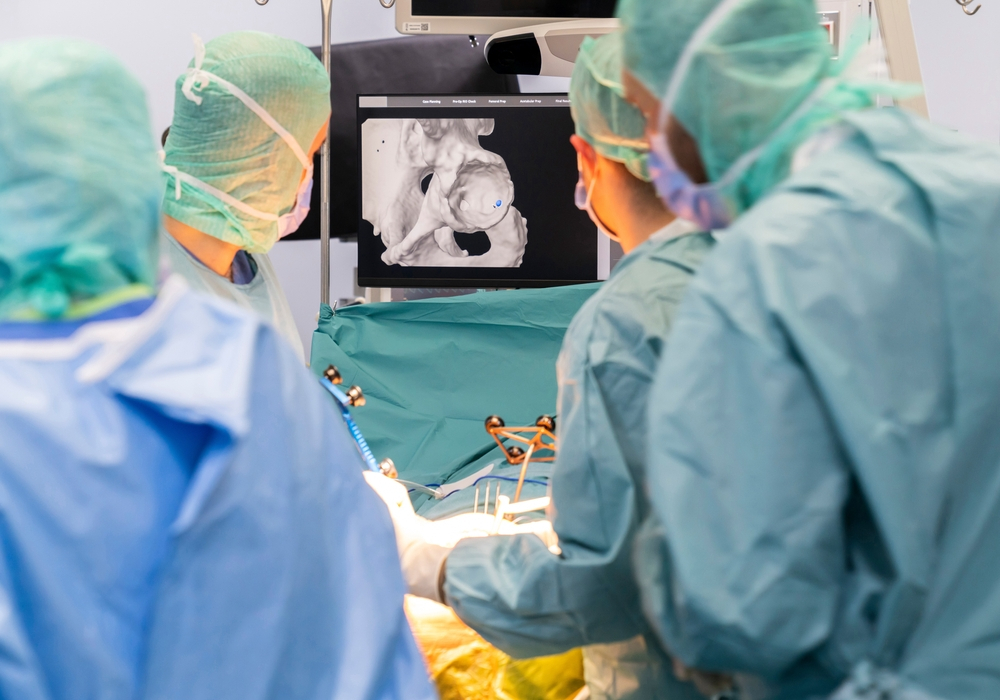For those suffering from chronic knee pain and limited mobility, knee replacement surgery offers a path to a more active and pain-free life. Over the years, surgical advancements have introduced new technologies, including Robotic Knee Replacement, which provides a modern alternative to Traditional Knee Replacement methods. But how do these approaches compare?
This blog explores the similarities, advantages, and disadvantages of Robotic Knee Replacement vs. Traditional Knee Replacement, helping patients make informed decisions about their treatment options.
Robotic vs Traditional Knee Replacement: Choosing the Right Approach for You
When considering knee replacement surgery in Vadodara, patients often grapple with choosing between Robotic Knee Replacement vs. Traditional Knee Replacement techniques. Both methods aim to alleviate pain, restore mobility, and improve the quality of life, but they differ significantly in execution and outcomes.
Understanding the Two Approaches
- Traditional Knee Replacement: In this method, the surgeon manually removes damaged bone and cartilage from the knee joint and replaces them with artificial components.
- Robotic Knee Replacement: This method uses advanced robotic technology to assist the surgeon in planning and executing the surgery. The robot provides real-time data, enhancing precision and alignment.
The choice between these approaches depends on several factors, including the patient’s condition, surgeon expertise, and access to advanced technology.
Similarities Between Robotic and Traditional Knee Replacement
Despite their differences, both Robotic Knee Replacement and Traditional Knee Replacement share common goals and fundamental similarities:
- Purpose: Both methods are designed to treat severe arthritis, knee injuries, or degenerative conditions causing pain and limited mobility.
- Procedure: Both involve replacing damaged knee components with prosthetic implants.
- Outcome Goals: The aim is to alleviate pain, restore knee function, and improve the patient’s quality of life.
- Rehabilitation Needs: Both require a structured rehabilitation program post-surgery to ensure optimal recovery and regain mobility.
The Common Ground
| Aspect | Robotic Knee Replacement | Traditional Knee Replacement |
| Goal | Pain relief and restored mobility | Pain relief and restored mobility |
| Type of Procedure | Total or partial knee replacement | Total or partial knee replacement |
| Implant Materials | Similar materials (metal, plastic) | Similar materials (metal, plastic) |
| Recovery Requirements | Physical therapy essential | Physical therapy essential |
While the techniques differ, the fundamental aspects of knee replacement surgery remain consistent across both methods.
Advantages of Robotic Knee Replacement Technology
The advent of robotic systems has revolutionized knee replacement surgery, offering distinct advantages over traditional methods.
1. Increased Precision and Implant Alignment
One of the most significant benefits of Robotic Knee Replacement is the enhanced precision it provides:
- Pre-Surgical Planning: Robotic systems use advanced imaging, such as CT scans or 3D mapping, to create a personalized surgical plan tailored to the patient’s anatomy.
- Real-Time Guidance: During surgery, the robot provides real-time feedback, helping the surgeon achieve accurate alignment and placement of the implant.
- Improved Longevity: Accurate implant alignment reduces wear and tear, potentially extending the lifespan of the prosthetic joint.
Robotic Knee Replacement vs Traditional Knee Replacement shows a clear edge here, as the latter relies solely on the surgeon’s experience for alignment.
2. Potentially Faster Recovery Time
Patients undergoing Robotic Knee Replacement may benefit from a quicker recovery period due to:
- Minimally Invasive Techniques: Robotic systems allow for smaller incisions, resulting in less tissue damage.
- Reduced Pain and Swelling: Enhanced precision minimizes trauma to surrounding tissues, leading to faster healing.
- Early Mobility: Patients may regain mobility sooner and return to daily activities more quickly compared to traditional methods.
While recovery timelines vary, many patients report feeling improvement sooner after robotic-assisted procedures.
Disadvantages of Robotic Knee Replacement
Despite its advantages, Robotic Knee Replacement has certain drawbacks that must be considered.
1. Higher Cost of Surgery Compared to Traditional Methods
- Increased Expenses: The use of advanced robotic technology significantly increases the cost of surgery.
- Insurance Coverage: Not all insurance plans fully cover the additional expenses associated with robotic procedures.
- Accessibility Issues: The higher costs can be a barrier for patients with limited financial resources.
When evaluating Robotic Knee Replacement vs Traditional Knee Replacement, cost remains a major deciding factor for many patients.
2. Limited Availability of Robotic Technology in All Locations
While robotic systems are increasingly popular, their availability is still limited:
- Geographical Barriers: Advanced robotic equipment may not be accessible in rural or remote areas.
- Surgeon Expertise: Not all surgeons are trained or experienced in robotic-assisted techniques.
- Healthcare Facility Resources: Only specialized centers or hospitals offer robotic knee surgery due to the high cost of equipment and training.
These limitations mean that patients may need to travel to access robotic-assisted surgery, which could add to the overall expense and inconvenience.
Conclusion
When deciding between Robotic Knee Replacement vs Traditional Knee Replacement, it’s essential to consider the pros and cons of each approach in relation to your specific needs and circumstances.
Key Takeaways:
- Choose Robotic Surgery If:
- You prioritize precision and implant alignment.
- You are willing to invest in advanced technology for potentially better outcomes.
- The procedure is available in your area, and your surgeon is experienced with robotic systems.
- Opt for Traditional Surgery If:
- You prefer a cost-effective solution without sacrificing quality care.
- Robotic technology is unavailable in your location.
- You trust your surgeon’s expertise with manual techniques.
Ultimately, the success of knee replacement surgery depends on the surgeon’s skill, the quality of postoperative care, and the patient’s commitment to rehabilitation. Consult a qualified orthopedic specialist like Dr. Shivam Shah to determine the most suitable approach for your condition.
Whether you choose Robotic Knee Replacement or a traditional method, the goal remains the same: to restore mobility, alleviate pain, and help you live a more active and fulfilling life.

